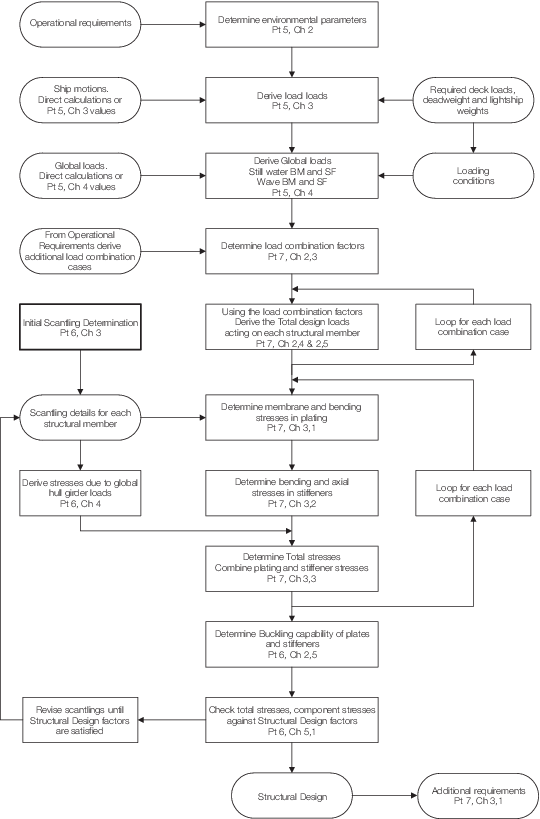1.1.1 The
Total Load Assessment, TLA, procedure is an optional
procedure that is applied on a voluntary basis when an Owner or designer
who seeks to increase confidence levels in the structural integrity
of a ship. The TLA procedure is illustrated in Figure 3.1.1 Overview of the Total Load Assessment, TLA Procedure

Figure 3.1.1 Overview of the Total Load Assessment, TLA Procedure
1.1.2 The TLA procedure is based on the following concepts:
-
Derive the total
design loads acting on each structural member.
-
Derive the structural
resistance of each structural member.
-
Derive the load
utilisation factors.
-
Ensure the load
utilisation factors are less than the required design factors.
1.1.3 This
Chapter gives the simplified stress analysis methods to be used for
the TLA procedure. Direct calculations or alternative
proven methods of analysis which are more rigorous will be accepted.
1.1.6 The
simplified stress analysis techniques predict the total stresses acting
in the structure as a consequence of the total loads. These techniques
cover the assessment of stresses in the following:
- Primary structure.
- Primary/secondary plating systems.
- Grillage plating systems.
1.1.7 The
resulting stresses are then checked against a set of design factors,
which include stress, deflection and buckling requirements.